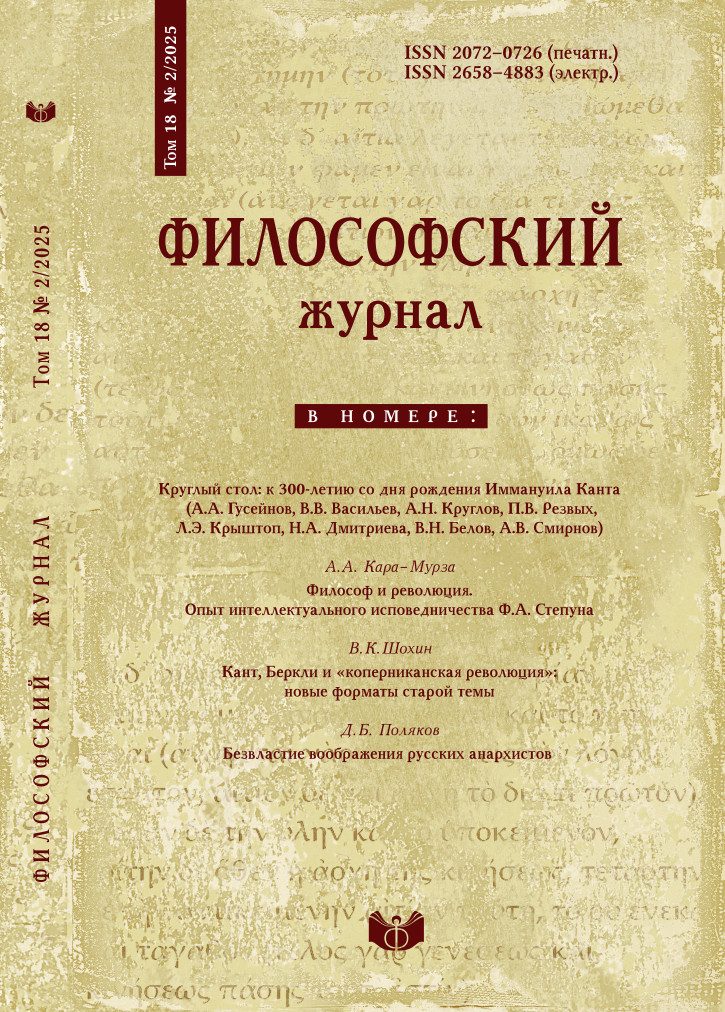Image, symbol, visage: F.A. Stepun’s ontology of culture and history
DOI:
https://doi.org/10.21146/2072-0726-2025-18-2-94-108Keywords:
ontology of culture, metaphysics of history, transcendental philosophy, Russian thought, neo-Kantianism, creativity, life, symbolism, revolutionAbstract
This article is devoted to identifying the features of F.A. Stepun’s creative evolution, which resulted in the philosophical concept of Christian culture and history. At the center of consideration of philosopher is the phenomenon of culture as a condition and path of ascent to the Absolute. Stepun thinks of culture as the universal beginning of human sociality and creativity in the historically specific form of its existence. The article shows that Russian culture in its history is such an ideal type, possessing both universal and unique features. According to Stepun, it expresses itself in a figurative and symbolic order of being and has its eternal visage in the metaphysical horizon of history. The thesis is formulated in the work that Stepun develops a specific philosophical and sociological method of comprehending the cultural history of Russia, focusing on the historiosophical criticism of Russian revolution in the emigrant period. Based on a number of theoretical propositions of neo-Kantianism and skillfully using different genres of philosophical discourse, he tries to overcome the ontological contradiction between life and creativity in the idea of Christian culture. In this way, Stepun gives his answer to the key question of European and Russian thought about the relationship between faith and reason, insisting on the need of Christian beliefs for the philosopher as a creative personality and bearer of the spiritual and intellectual tradition of culture.






